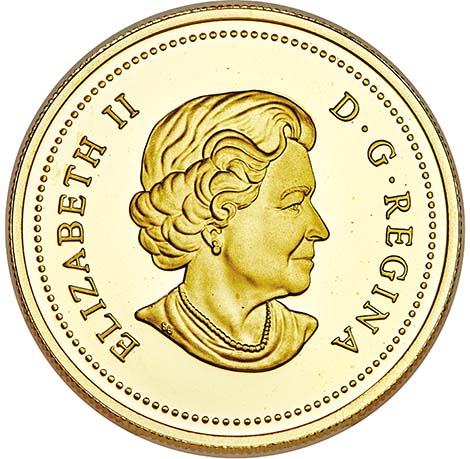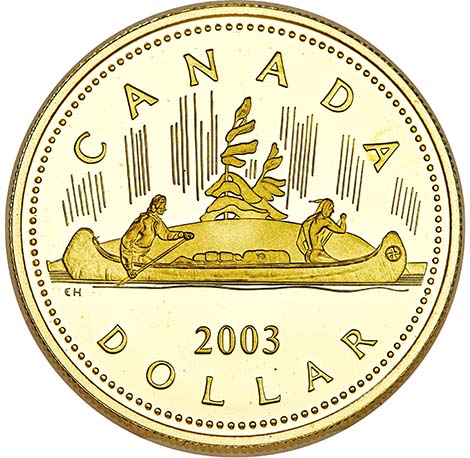The following mint errors are featured in the August 2019 ANA World’s Fair of Money Heritage Auction.
1943 Bronze Cent, AU58
Famous Off-Metal Error
Ex: Bob Simpson Collection
Among the Most Celebrated U.S. Error Coin Issues
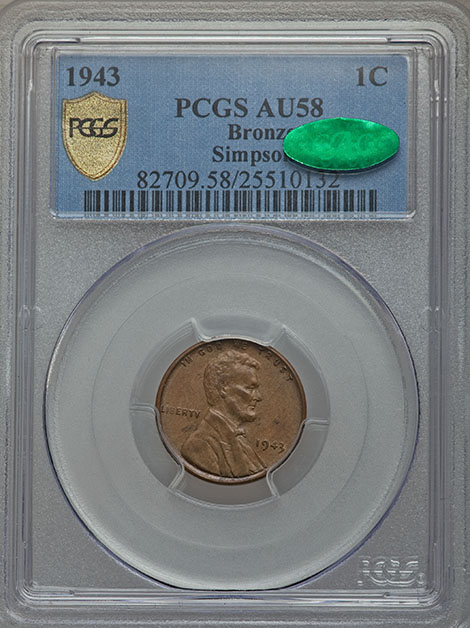
1943 CENT Struck on a Bronze Planchet AU58 PCGS. CAC. Ex: Simpson. Bob Simpson still retains, to our knowledge, a complete 1943-PDS set of bronze cents, all Uncirculated. This is a duplicate Philadelphia Mint coin that we first sold in 2016.
How Many Genuine 1943 Bronze Cents Survive?
The best estimate, excluding branch mint issues, is 10 to 12 coins. A census published of 1943-PDS bronze cents in the Flynn and Wexler 1996 Lincoln cent reference is of limited use today; although it lists numerous ANACS (or ANAAB more properly, the old ANA Authentication Bureau (which was discontinued in 2002) authentications, it is difficult to conclusively match those coins with the more recent certifications at PCGS and NGC.
The Present Coin, 1943 Bronze Cent, AU58 PCGS
David Lange in his Complete Guide to Lincoln Cents calls the 1943 bronze cents "error coin royalty” (from the Things We Wish We Had Said department), and it is certainly true that no other U.S. error coins have spurred the popular imagination nearly so much as these pieces have. In fact, Bob Simpson himself discovered a counterfeit 1943 bronze cent in circulation as a youngster, and for a short while he, too, thought that he had come into possession of a tremendous treasure. He still retains that coin today, although it was soon revealed as a counterfeit -- likely by a magnet, as most are copper-plated 1943 steel cents.
This piece is easily identified by its lack of singular distractions and limited wear, far finer than most survivors of this rare error. A bit of smudging in the right obverse field, directly above the 4 and about in line with Lincoln’s chin provides a clear identifier, as does a similar area at the rear of the coat below RTY.
1943 Philadelphia Bronze Cents Certified Populations
This is a listing of the certified grading events at PCGS and NGC. Duplications and crossovers are likely; some genuine examples may be omitted.
PCGS-Certified Coins
1. MS62 Brown. Found in circulation by Marvin Beyer, Jr., age 14, around 1957; ANA Convention Sale (Abe Kosoff, 1958), where the coin was withdrawn by Marvin Beyer Sr. before the sale; reportedly sold to the Greer Company of Los Angeles for $40,000 in 1959; Pre-Long Beach Sale (Superior, 10/2000), lot 4146, as MS61 ANACS, $60,375; Benson Collection, Part II (Goldbergs, 2/2003), lot 148 as MS61 Brown PCGS, $97,750 (certification #50035361); subsequently graded MS62 Brown PCGS Secure; Bob Simpson (9/2012); Simpson Collection. Beautiful blue-brown surfaces with generous luster, softly struck on Lincoln’s beard and coat. Certification #18523486. Pictured on PCGS CoinFacts.
2. MS61 Red and Brown. "James Schirrippa,” per PCGS CoinFacts. Sharply struck with deep orange and purple-blue patina and some brownish toning on the lower reverse, hints of green in the obverse field. Carbon spot at L(IBERTY). V-shaped mark right of C(ENT). In the Staten Island Collection Lincoln Cents, Off-Metal Strikes Registry Set (#2 behind the Simpson Collection). Certification #50040291. Pictured on PCGS CoinFacts.
3, 4. MS61 Brown. Two submissions; one is certification #19228068, last seen in the High Desert Collection. Pictured on PCGS CoinFacts. Lovely orange-gold and light-blue surfaces on both sides. PCGS still shows two in this grade, although as mentioned, one with certification #50035361 was later upgraded to the #1 Beyer-Simpson coin above. It is unclear if there are still two other PCGS coins in the MS61 Brown grade.
5. AU58. According to a photo (page 322, #8) in the 1996 Wexler-Flynn Lincoln cent Authoritative Reference, this coin was earlier certified by ANAAB with certificate #FD0251. Bob Simpson; FUN Signature (Heritage, 1/2016), lot 5266, realized $305,500. PCGS certification #25510132. Pictured on PCGS CoinFacts.
6. AU55. Americana Sale (Stack’s Bowers, 1/2013), lot 13257, brought $317,250; Regency Auction (Legend-Morphy, 5/2014), lot 12, realized $329,000. Currently in the Numism1 Set Registry inventory at PCGS and contained in the Hoiner 100 Greatest U.S. Coins Registry Set. Well-struck overall with medium milk-chocolate surfaces, small flecks at bottom of coat (below 1) and front of Lincoln’s head above the eyebrow. Weakness shows on O(NE) and AM(ERICA). Certification #26441689. Pictured on PCGS CoinFacts.
7. XF45. Sandy-tan example with a few scattered marks. Softly struck on 43 in the date. Certification #37650115, Summer FUN Signature (Heritage, 7/2019), lot 3012.
8. XF45 PQ. CAC. Pre-Long Beach Sale (Ira and Larry Goldberg, 2/2017), lot 756. Not identified by certification number.
9. Genuine PCGS (VF Details). A "teenaged newspaperboy”; bought at a Dearborn, Michigan, coin show around 1987; Goldberg Auctions (9/2007), lot 2462, brought $60,375; New York Signature (Heritage, 11/2013), lot 3508, realized $88,125. PCGS #21445181. Some unfortunate test cuts were made in the surfaces. Photographed as #4 in the Wexler-Flynn reference.
NGC Certifications
These grading events will undoubtedly duplicate some coins listed above.
10. MS63 Brown.
11. MS62 Brown. Albert Michael Pratt; ANA Signature (Heritage, 8/2017), lot 3899. Certification #2067200-002. An attractive walnut-brown specimen with a tick over the 4 in the date.
12. MS61 Red and Brown.
13. MS61 Brown. Albert Michael Pratt; FUN Signature (Heritage, 1/2018), lot 4763. Certification #2067200-001. Reddish-brown and steel patina, with a large obverse die break on the rim at 6 o’clock.
14, 15, 16. AU58; three grading events. One coin was once depicted on NGC Coin Explorer, unidentified as to grade or certification number -- but it is the former Simpson coin, number 5 above, now in a PCGS holder.
17. AU55.
18. AU53. Discovered in a school cafeteria in 1947 by Don Lutes, Jr.; FUN Signature (Heritage, 1/2019), lot 4362, realized $204,000. Certification #4629671-001. Pictured on NGC Coin Explorer. Lightly worn olive-brown example with a short horizontal gouge below the 3 in the date.
19, 20. AU50; two submissions.
Selections from The Bob R. Simpson Collection / FUN Signature (Heritage, 1/2016), lot 5266.
From The Poulos Family Collection. (NGC ID# 22E5, PCGS# 82709)
Weight: 3.11 grams
Metal: 95% Copper, 5% Tin & Zinc
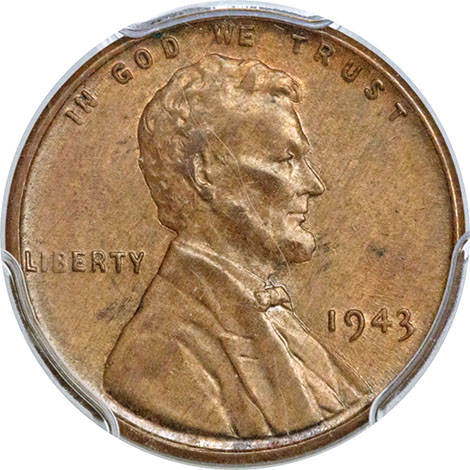
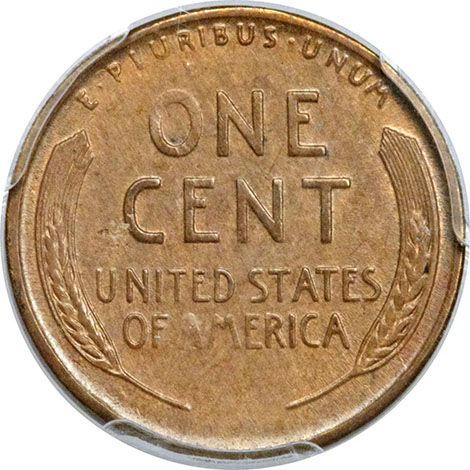
1943-S Bronze Lincoln Cent, AU53
Famous Wrong-Planchet Error
Only Six Examples Traced
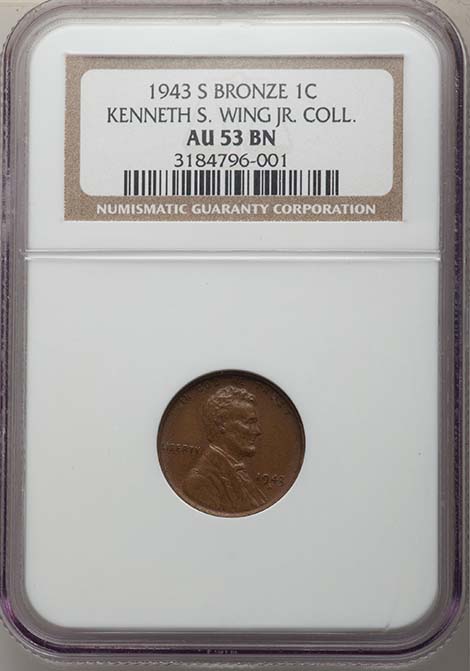
1943-S 1C Struck on a Bronze Planchet AU53 NGC. Ex: Kenneth S. Wing, Jr. Collection. The 1943 bronze Lincoln cents are among the best-known and most valuable issues in all of American numismatics. Their fame actually extends far beyond traditional numismatics, as millions of children in the middle decades of the 20th century thrilled to colorful ads about the "copper pennies” on the back pages of comic books, while their parents read similar solicitations in mainstream magazines. Rumors that Henry Ford would reward the finder of any 1943 "copper” cent with a new car swept the country, despite frequently published denials by the Ford Motor Company. The lowly cent was a familiar object to everyone in everyday life and the prospect of finding one that was miraculously worth a fortune was intoxicating. Countless rolls of cents were searched in hopes of finding such a treasure. Frequent "finds” were well-publicized in newspapers and the media, but the finders were almost always disappointed when cursory examination revealed their coins were copper-plated examples of the regular-issue zinc-coated steel cents manufactured in 1943 to conserve copper for the war effort. Still, a few legitimate finds kept the legend of the 1943 "copper” cent alive-and-well with the general public and established a legacy unlike that of any other American coin. Heritage Auctions is privileged to offer one of the earliest and most storied "finds” of this iconic issue, a very rare AU53 NGC specimen from the San Francisco Mint, in its second auction appearance.
An Unintended Consequence
Copper was an essential commodity in the wartime economy of 1943 and any shortage could seriously affect the war effort. To conserve this essential material, the Treasury Department decided to substitute zinc-coated steel planchets for the usual bronze blanks used in cent production in 1943. The "steel” cents were produced in massive numbers, and were widely saved by contemporary collectors for their novelty value. As fate would have it, a few bronze planchets became stuck in the tote bins used to feed the coin presses in late 1942. These planchets went unnoticed when the tote bins were refilled with zinc-coated steel planchets to begin cent production the following year. The wrong-metal planchets soon became dislodged and were fed into the coin press with the regular-issue "steel” blanks, creating the celebrated 1943 bronze cents. This phenomenon occurred at all three active mints. Today, an estimated 15-20 examples of the 1943 bronze cent from the Philadelphia Mint survive, while just a single example from the Denver Mint is known, and six specimens from the San Francisco facility have been confirmed. Any 1943 bronze cent is an important find and examples regularly sell for six-figure prices at auction.
The Present Coin
Although the 1943-S bronze cents are much rarer than their Philadelphia Mint counterparts, it appears they were actually discovered first. At least two coins, including the specimen offered here, were discovered within one year of the time of issue. This piece was found in circulation by 14-year-old collector Kenneth S. Wing, Jr. of Long Beach, California in 1944. It was exactly the kind of find that would establish the legend of the 1943 bronze cents and keep hopeful collectors searching through rolls of cents down to the present day, but Wing did not publish his discovery at the time. He did show the coin to a local coin dealer, who made a strong offer of $500 for it, but Wing decided to keep his treasure and try to find out more about it.
Wing maintained an extensive file of correspondence and clippings regarding his 1943-S bronze cent, which he retained throughout his lifetime. He made an inquiry about his coin with the Treasury Department and received a reply from Acting Mint Director Leland Howard in August of 1946 telling him "there were no copper cents struck during the calendar year 1943 at any of the coinage Mints.” Howard’s reply was typical of the Mint’s responses to all questions about 1943 copper cents. Mint officials continued to officially deny the possibility of any off-metal cents produced at the Mint until well into the 1960s, by which time their existence was firmly established.
Undeterred, Wing continued to correspond with coin dealers like Leonard Julian and Abe Kosoff about his coin over the years. He showed his bronze cent to the Superintendent of the San Francisco Mint in 1948 and was privately told it was probably genuine, despite the official denials of the Treasury Department (they were particularly sensitive to any possibility of coins leaving the Mint through unofficial channels because of the controversy about the 1933 double eagles, which began in 1944). In 1957, Wing’s father made a business trip to Washington, D.C. and had the coin examined by Curator Vladimir Clain-Stefanelli at the Smithsonian Institution, among others. In a June 18, 1957-dated letter, Clain-Stefanelli reported, "The authenticity of this piece is in my opinion beyond doubt.” Wing kept his 1943-S bronze cent until his death in 1996 and it remained in his family until 2008, 64 years after he discovered it.
Kenneth Wing’s 1943-S bronze cent made national headlines when it finally surfaced in 2008. Rare Coin Wholesalers, headed by Steve Contursi, purchased the coin from Wing’s heirs in July of that year for $72,500, a transaction that made front-page news in Numismatic News and Coin World the following month. It was acquired by prominent collector Kerry Rudin, and remained in his collection until it was offered in our 2018 FUN Signature, its first auction appearance. We are privileged to offer this landmark rarity again in our present sale.
The present coin is an impressive AU53 example, with glossy surfaces that show a mix of light brown, crimson, and traces of original red patina. Because the steel planchets used for regular-issue 1943 cents were much harder than the usual bronze blanks, the Mint adjusted the pressure settings and die spacing on the coin presses to improve striking quality. As a result, all 1943 bronze cents are sharply struck, and this piece is no exception, showing just a touch of light wear on the strongly impressed devices. The surfaces are lightly abraded but a few slight flaws on the obverse help with pedigree identification, including a near-vertical tick on Lincoln’s cheekbone and a hairline-thin scrape from the obverse field left of T(RUST) to a hair curl above Lincoln’s head down to the ear. The overall presentation is most attractive. One of only six known specimens of this iconic issue, this particular coin has only been offered once at public auction. It may be many years before a similar opportunity to acquire this rare numismatic treasure presents itself. The discerning collector should bid accordingly.
Roster of 1943-S Bronze Cents
We can confirm only six examples of the 1943-S bronze cents certified by the two major grading and authentication services, including several resubmissions and crossovers. Perhaps as many as 15 to 20 examples survive of the 1943 Philadelphia bronze cents, while the 1943-D bronze cent, MS64 Brown PCGS, in the Simpson Collection (for which he paid $1.7 million in 2010) remains unique, despite decades of searching on the part of thousands of collectors. The roster is based on publicized trades and public auctions; private trades may represent other examples that are unlisted here.
1. MS62 Brown PCGS Secure. "Found in the year of issue in a Mint-sewn bag of 1943-S steel cents” by Merl D. Burcham, per its early appearances with Superior Galleries (the Superior lot description from February 1974 is reprinted in Dr. Sol Taylor’s Standard Guide to the Lincoln Cent, fourth edition [1999], page 138); later to error coin dealer Frank Spadone; part of a $15,000 trade of "regular and pattern silver coins valued at that time [1965] between Spadone and Walter Farris of Bristol, Tennessee, per the Superior ads (and covered in a Coin World story on page 41, January 20, 1965); authenticated at some point by Walter Breen (before 1965, by which time Farris had obtained the certification); Dr. Charles L. Ruby Collection, Part I (Superior, 2/1974), lot 1991; Jan Bronson; Alan Van Vliet, in 1976; Margene Heathgate Collection (Superior, 6/1997), lot 145, realized $49,500; Dr. Jon Kardatzke Collection (Goldberg Auctions, 2/2000), lot 257, as MS61 Brown NGC, brought $115,000; Legend Numismatics to Bob Simpson as MS62 Brown PCGS for $1 million (9/2012); Simpson Collection. Possibly the MS61 Brown NGC example listed on their Census Report. Wexler-Flynn #3, PCGS certification #25510131.
2. AU58 PCGS. Central States Auction (Kurt Krueger, 4/1989), lot 979; Dave Berg in 1989; private collection; Haig Koshkarian Collection (American Numismatic Rarities, 3/2004), lot 380; Simpson Collection; Long Beach Signature (Heritage, 2/2016), lot 3087, realized $282,000. This piece became the Bob Simpson "duplicate” when he purchased a 1943-S bronze cent in MS62 Brown PCGS Secure for $1 million in September 2012, a transaction arranged by Legend Numismatics. Formerly graded AU58 NGC, still listed on the NGC Census Report. Wexler-Flynn #1, PCGS certification #18523980.
3. AU55 PCGS Secure. Fred Weinberg in 1979; Dwight Berger in 1983; purchased from an unspecified auction "sometime during the 1980s” and newly certified at PCGS in autumn 2015. Previously authenticated by ANACS. The Sorensen Collection / FUN Signature (Heritage, 1/2016), lot 5267, brought $211,500. Wexler-Flynn #2, PCGS certification #25653505.
4. AU55 NGC. Saint Louis Signature (Heritage, 3/1989), lot 56; Dwight Berger; ANA Signature (Heritage, 7/1997), lot 5919. Wexler-Flynn #4, listed on the NGC Census Report.
5. AU53 NGC. Ex: Kenneth S. Wing Jr. Collection. "Discovered within a year of its issue, this attractive specimen remained in the same family for more than 60 years,” according to its NGC Photo Proof certification and extensive documentation provided by its current owner. Found in circulation in 1944 by 14-year-old collector Kenneth S. Wing, Jr. in Long Beach, California; Kenneth S. Wing family; sold to Rare Coin Wholesalers for $72,500 (7/2008); purchased from Park Avenue Numismatics for $173,000 (8/2008); Kerry Rudin; FUN Signature (Heritage, 1/2018), lot 4764; realized $228,000. NGC certification #3184796-001; formerly in a slab with NGC certification #3210930-001 (now listed as AU53/Deleted by NGC), also formerly certified as XF45 PCGS, certification #11456467, and still pictured on the PCGS CoinFacts site. Photographed on NGC Coin Explorer. The present coin.
6. VF35 PCGS. Dr. Carl A. Minning, Jr. Collection (Bowers and Merena, 8/1999), lot 1122, brought $51,750; Pre-Long Beach Sale (Superior, 10/2000), lot 4147; Phillip Flannagan et al. Sale (Bowers and Merena, 11/2001), lot 6076, realized $62,100; Alfred V. Melson Collection, Part Two / Long Beach Signature (Heritage, 2/2010), lot 178, garnered $207,000; Geyer Family Collection / New York Signature (Heritage, 11/2013), lot 3510, brought $141,000. Described by the 1999 Bowers and Merena cataloger as "King of the Small Cents / Nationwide Publicity Item!” PCGS certification #3457896.
From The Poulos Family Collection. (NGC ID# 22E9, PCGS# 82715)
Weight: 3.11 grams
Metal: 95% Copper, 5% Tin & Zinc
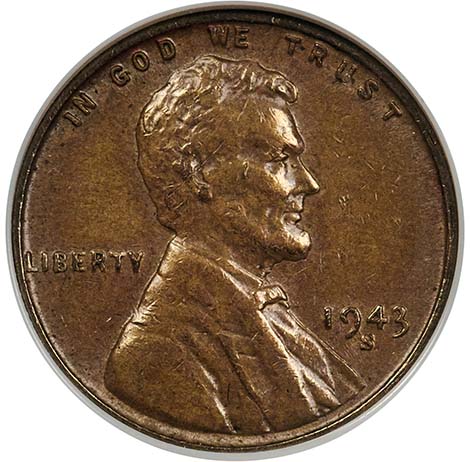
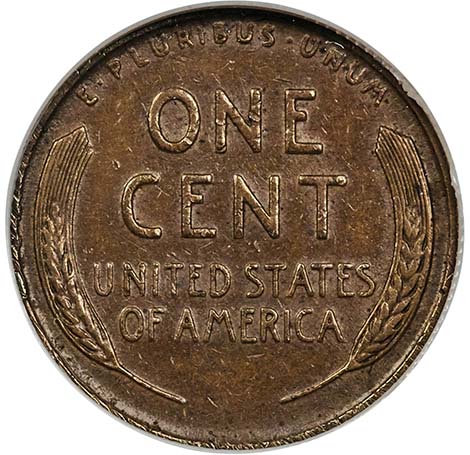
2000-D Maryland Quarter
Struck on Feeder Finger
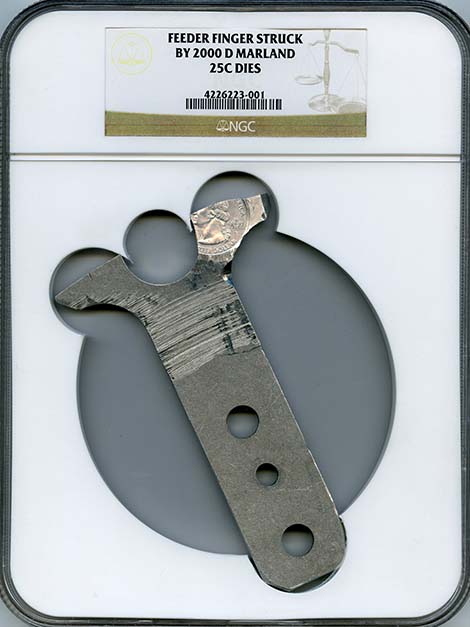
2000-D 25C -- Feeder Finger Struck by 2000-D Maryland Quarter Dies -- Ungraded NGC. A feeder finger is a replaceable part of the coin press that feeds planchets between the dies in a rotary system. This error occurred when the timing of that rotary system was out of sync. When such an error happens, the damaged feeder fingers are removed from the press and destroyed. The present example is one of only three known coin designs struck on full feeder fingers, and it is unique for the denomination. The scratches on the obverse side of the feeder finger attest to its authenticity and use in one of the Denver Mint’s Schuler presses. Coins struck on fragments of feeder fingers typically bring strong prices, but a complete feeder finger has never before been offered at auction, to the best of our knowledge.
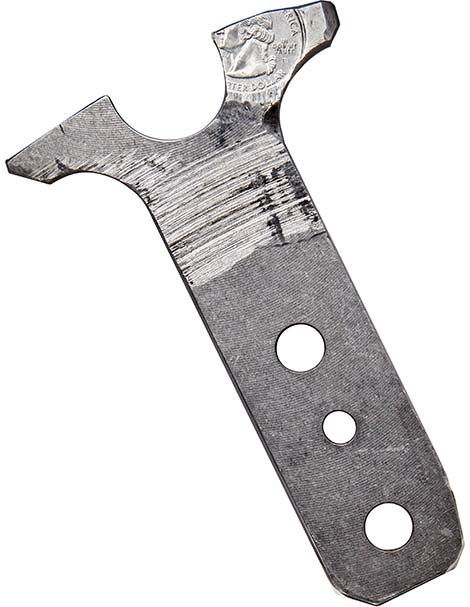
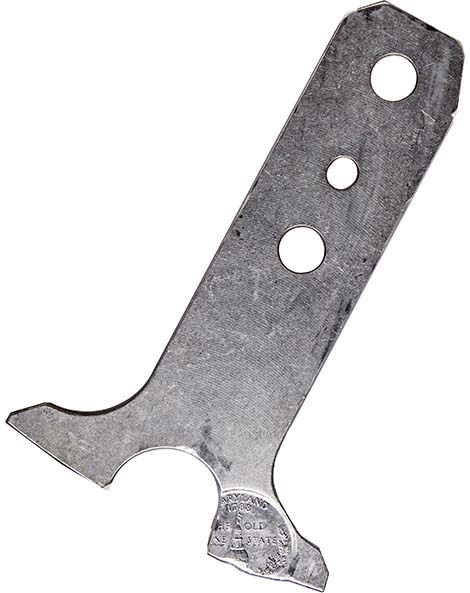
Undated Double Eagle Obverse Die Trial
Judd-A1859-10, MS64
Unique Die Variant
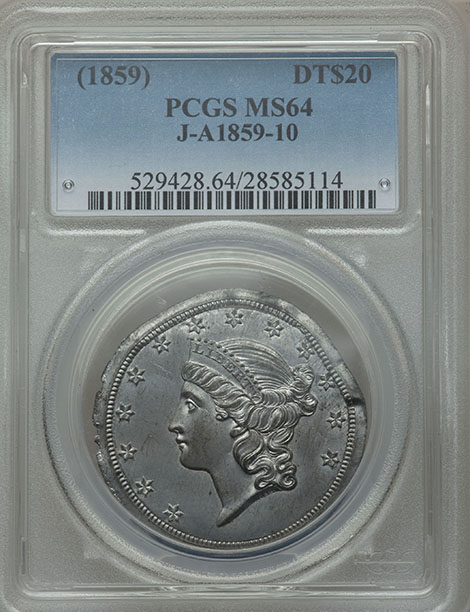
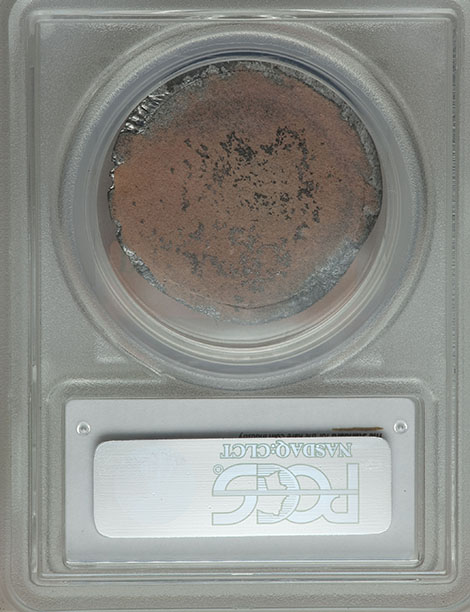
(1859) $20 Liberty Double Eagle, Obverse Die Trial, Judd-A1859-10, R.8, MS64 PCGS. Undated uniface obverse die trial or splasher of the obverse of the 1850 (undated) hub of the double eagle. The reverse is blank with paper backing. Struck with no collar, thus no edge, and made of white metal. There are three pieces known of this rare splasher, the other two are in the Library Company of Philadelphia and are from a slightly different die with the stars further in from the dentils. The surfaces are bright and the strike details completely defined. This is a unique striking and the only splasher of the Type One twenty available to collectors (the other two are #37 and #38 in the Library Company inventory).
Ex: Empire Coin Co. MBS #1 (11/1958), lot 103; Herbert M. Oechsner Collection (Stack’s, 9/1988), lot 246; Auction ‘89 (Superior’s session, 7/1989), lot 943; Boyd E. Hayward Collection (Bowers and Merena, 9/1997), lot 1553; ANA Auction (Stack’s Bowers, 8/2014), lot 13293; FUN Signature (Heritage, 1/2016), lot 6322. (PCGS# 529428)
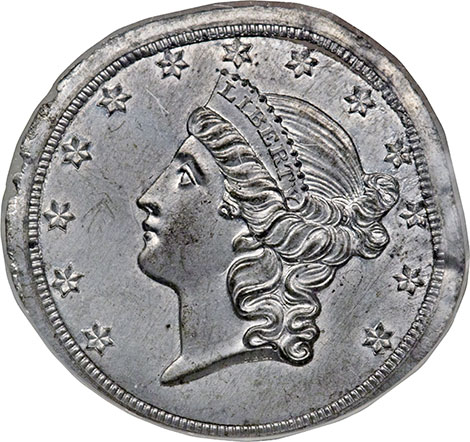
1999 Susan Anthony Dollar, MS64
Struck on a Sacagawea Dollar Planchet
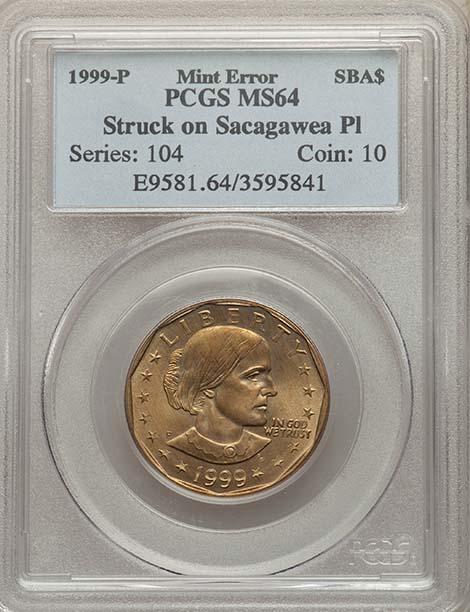
1999-P $1 SBA Dollar -- Struck on a Sacagawea Planchet -- MS64 PCGS. It has been years since we have handled one of these wrong planchet errors. To be clear, this is not an SBA dollar struck over an already struck Sacagawea dollar. Rather, the incorrect planchet, one made from a manganese brass outer layer over a pure copper core, was fed into the press, producing this off-metal dollar. Of note is the absence of the normally seen spots that usually accompany Sacagawea dollars. The strike details are remarkably soft in certain areas, especially the eagle’s claws and the wreath. This undoubtedly is from the difference in the two alloys used for each dollar coin, the SBA composed of copper-nickel. Soft, satiny mint luster.
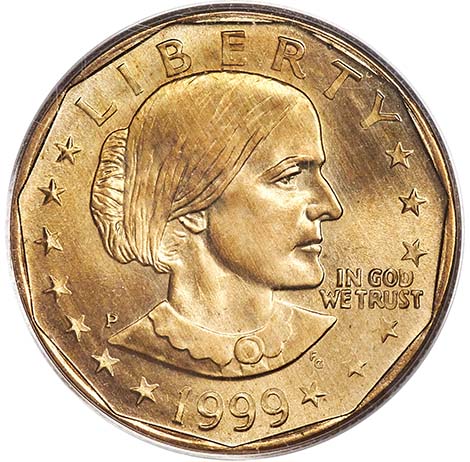
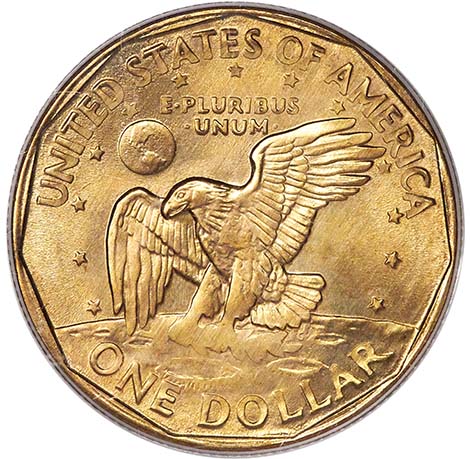
Unique Gold Dollar
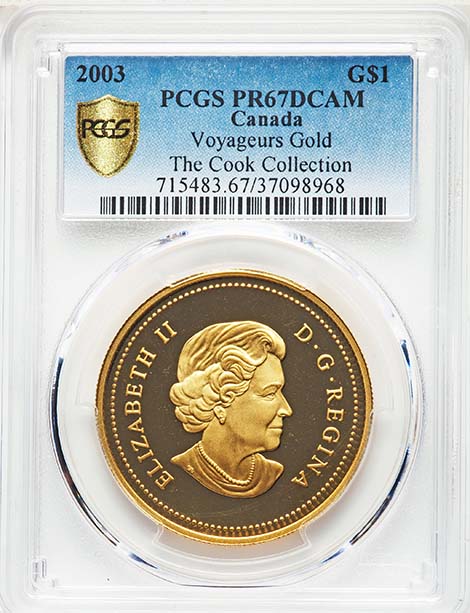
Elizabeth II gold Proof "Golden Jubilee” Dollar 2003 PR67 Deep Cameo PCGS, Royal Canadian Mint, cf. KM473 (silver). Absolutely unique, this stunning commemorative celebrates the 50th Anniversary of the Coronation of Queen Elizabeth II. The obverse design renders the Monarch’s bust simply, hair coiffed but without her crown, while the revival of the earlier Voyageur design is centered on the reverse. Both sides of the planchet are deeply infused with honeyed color, the fields filled with endless flash that reflects at every turn, while the raised features, thickly frosted throughout, result in outstanding cameo contrast.
Produced with the intention of raising money for charity, the Royal Canadian Mint used the dies that were created for the 2003 Special Edition Silver Dollar to strike just one example in gold--this coin. Though only sixteen years old, the historical significance of this rare Dollar adds tremendously to its allure. Canadian enthusiasts who have followed the ownership of this piece know what a once-in-a-lifetime opportunity it truly is to possess this incomparable specimen.
